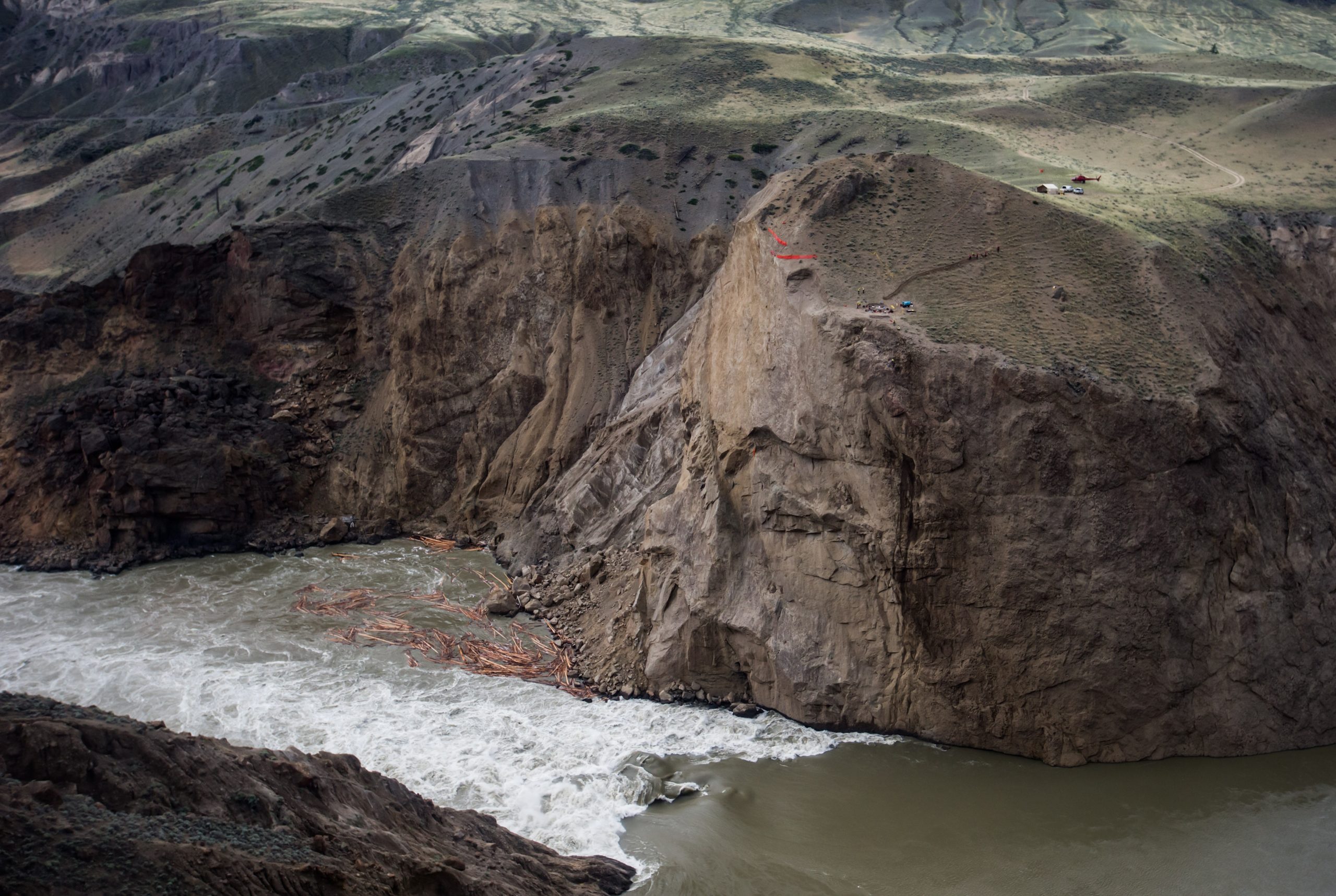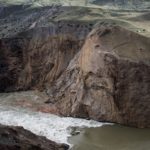Few delays for salmon that reach Fraser River slide site: officials

Officials say salmon are making good progress migrating past the site of a landslide on the Fraser River that decimated runs last year.
Michael Crowe, manager of biological programs for the Big Bar landslide response, says crews have done everything they can to ensure fish face only minimal delays thanks to efforts like rock blasting over the winter and the establishment of alternative passageways.
River flows this spring and summer that were too powerful for natural migration created overall delays in movement through the Fraser River system and some returns like sockeye have been lower than anticipated.
However, Crowe says once the flows dropped below about 5,500 cubic metres per second, returning fish were able to continue their migration upstream.
Those that reach the Big Bar landslide site have taken several routes past the obstruction, including migrating on their own or swimming into a fish cannon.
Fisheries Minister Bernadette Jordan told a Commons committee in June that the volume of the slide discovered last year was equivalent to a building 33 storeys high by 17 storeys wide.
"In consideration of the alternative fish passage systems put in and the declining hydrograph, the delay at Big Bar was for a very short period of time. We were able to move fish through, and in short order, the water dropped low enough that the fish were able to migrate on their own," Crowe said during a technical briefing Monday.
"Compared to last year, we're in a much better position overall to minimize the delay and move fish through. As such, we do feel that the Big Bar landslide has had far less impact on the overall migration condition than last year."
Still, officials expect overall spawning success this year to be lower than they'd like, but that's because of overall environmental conditions more than the landslide, he said.
Gwil Roberts, director of the Big Bar landslide response with Fisheries and Oceans Canada, said officials have not had to rely as heavily on a pump system dubbed the salmon cannon as they expected thanks to a five- to six-metre drop in water levels over the past five weeks.
Only 8,200 salmon have been transported past the slide using the technology and 117,000 salmon have been detected 40 kilometres upstream of the slide site, he said.
The removal of rocks over winter and the establishment of a channel involving the placement of rocks to mimic the natural eddies and flows that allow salmon to move upstream have been particularly successful in improving access for salmon compared with last year, he said.
More than 400 sockeye and 100 chinook have been collected to support emergency conservation enhancements. The fish are genetically tested to ensure they are matched with fish from similar stream environments in the hatcheries, Crowe said.
Officials with Fisheries and Oceans Canada told the Commons committee earlier this summer that early runs of Stuart sockeye and chinook salmon were devastated last year because they couldn't make it past the landslide.
They said 99 per cent of early Stuart and 89 per cent of early chinook salmon were lost.
About 60,000 fish were helped over the slide last year, Jordan said, while 220,000 made it past on their own once water volume dropped.
Officials will continue to support salmon runs through the fall and work into the winter to keep developing solutions, Roberts said.
"A longer-term solution here is going to take time. This is probably several years of work ahead of us."
This report by The Canadian Press was first published Aug. 31, 2020.
Amy Smart, The Canadian Press




